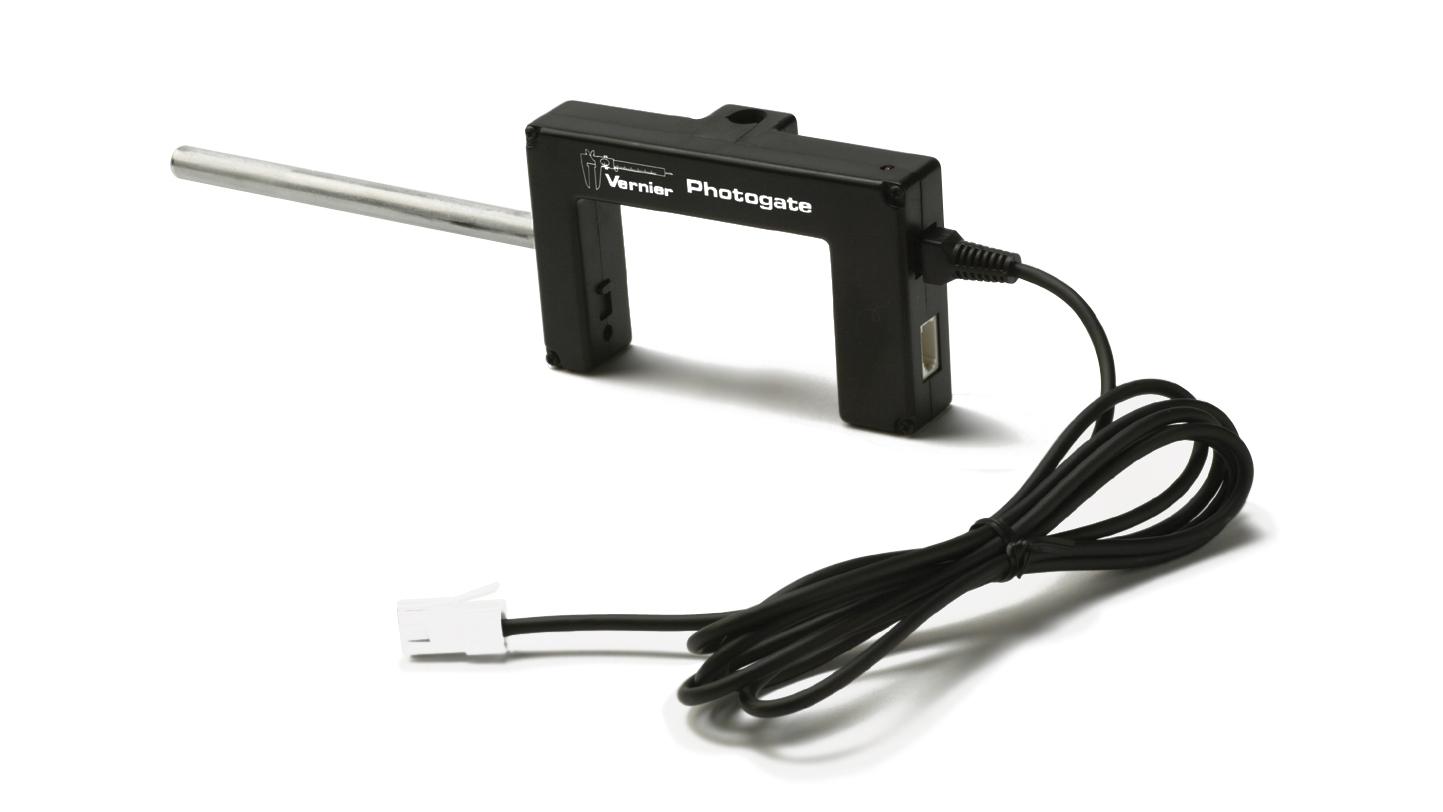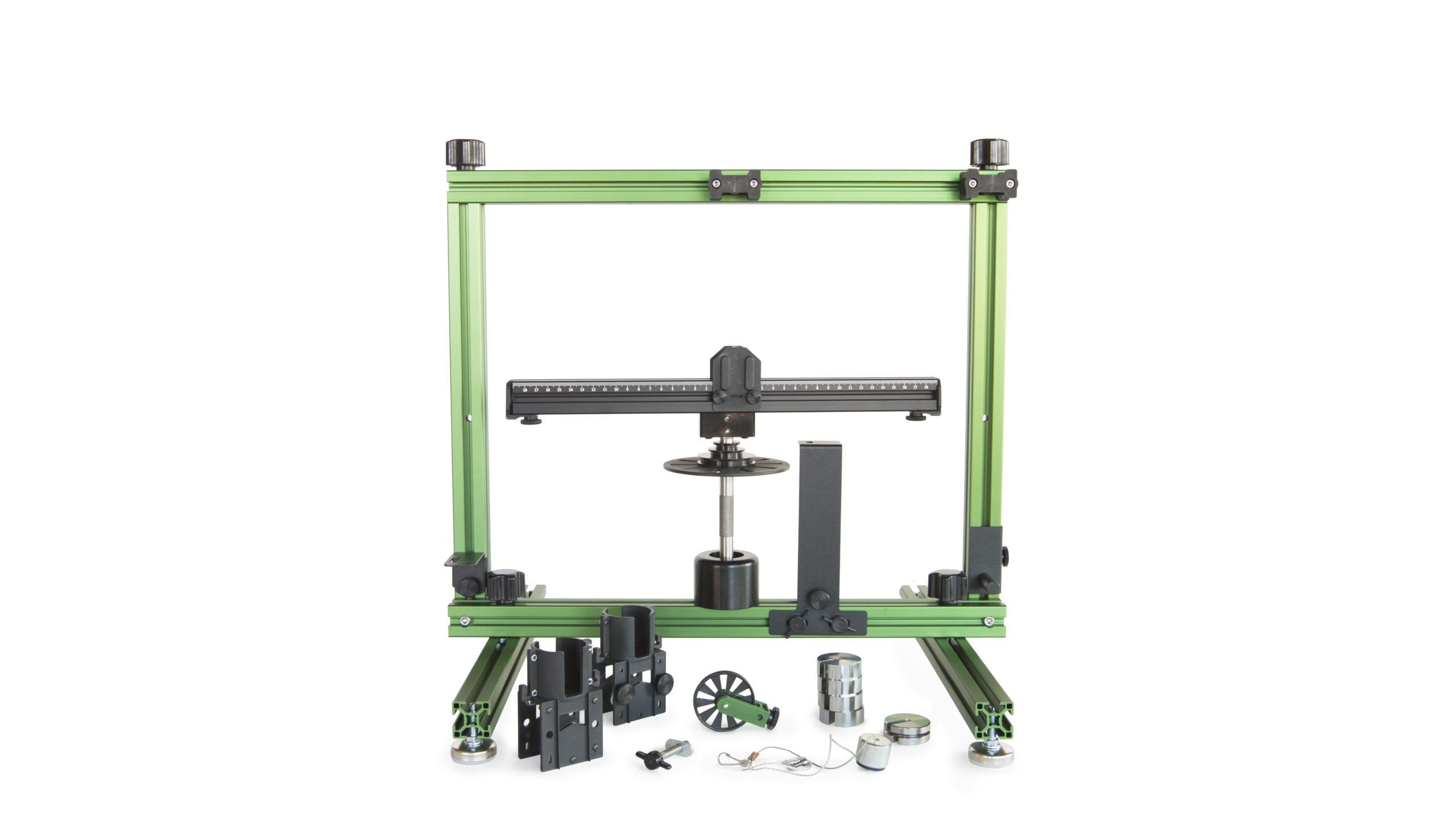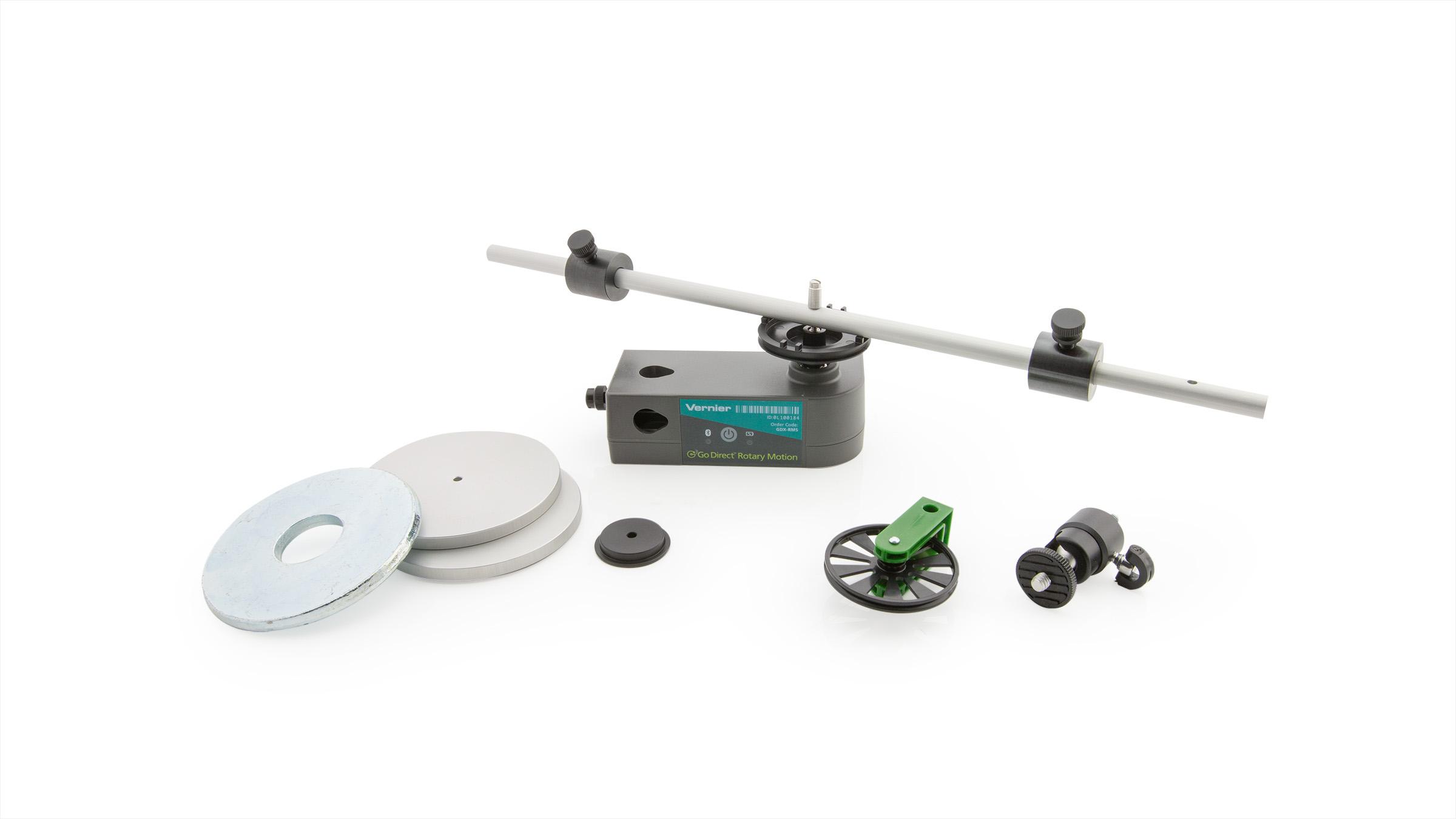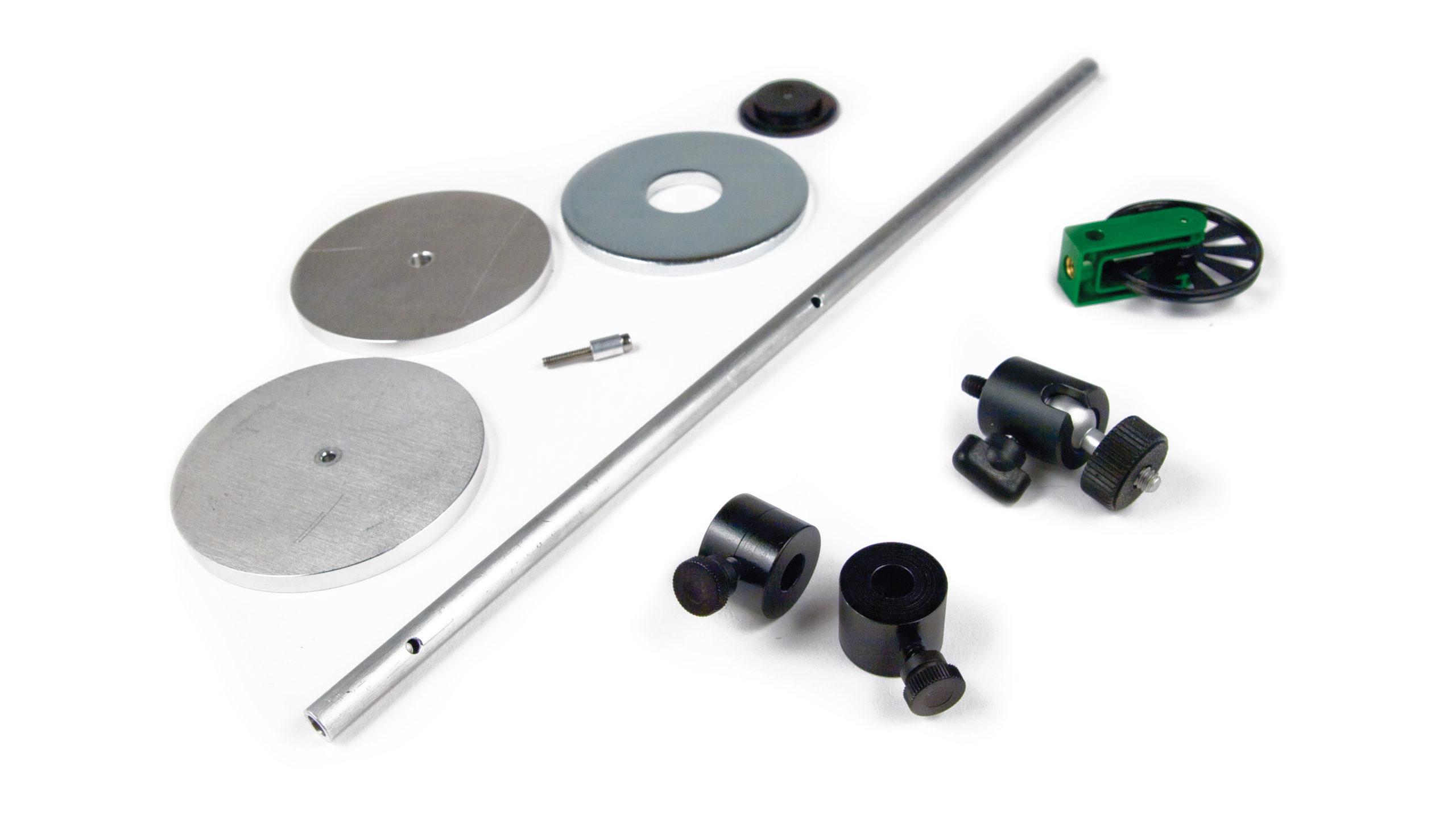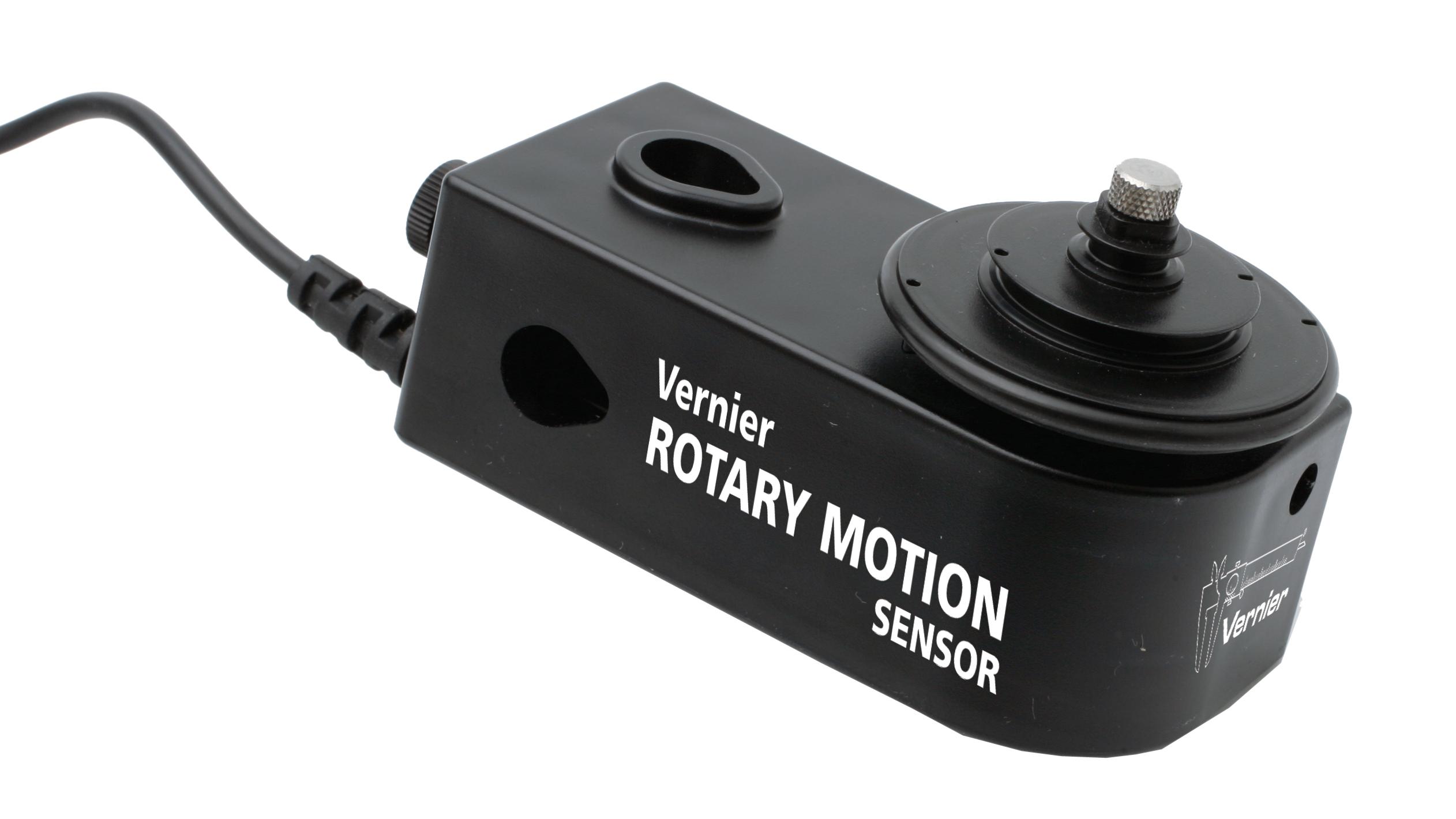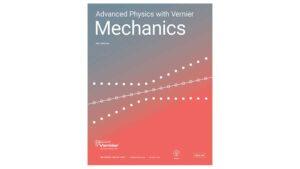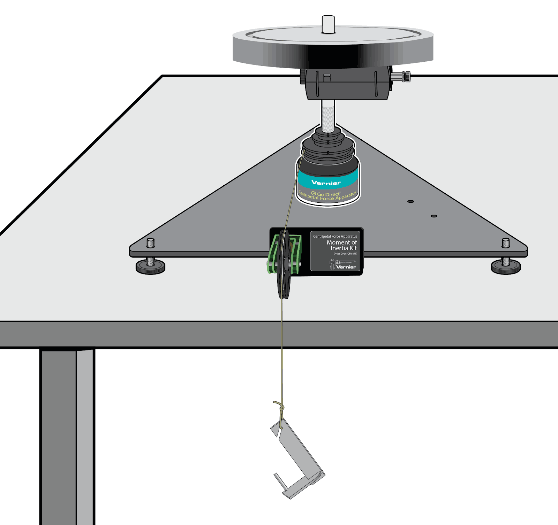
Introduction
When you studied Newtonian dynamics you learned that when an object underwent some form of translational motion (whether in a straight line, parabolic, or circular path), the net force applied to the object is proportional to the acceleration. The constant of proportionality is the mass of the accelerating object. When a torque (the rotational analogue to force), is applied to an object that is free to rotate, the object will undergo rotational acceleration. In this experiment, you will investigate the relationship between torque and angular acceleration.
Objectives
In this experiment, you will
- Collect angular acceleration data for objects subjected to a torque.
- Determine an expression for the torque applied to a rotating system.
- Determine the relationship between torque and angular acceleration.
- Relate the slope of a linearized graph to system parameters.
- Make and test predictions of the effect of changes in system parameters on the constant of proportionality.
Sensors and Equipment
This experiment features the following sensors and equipment. Additional equipment may be required.
Option 1
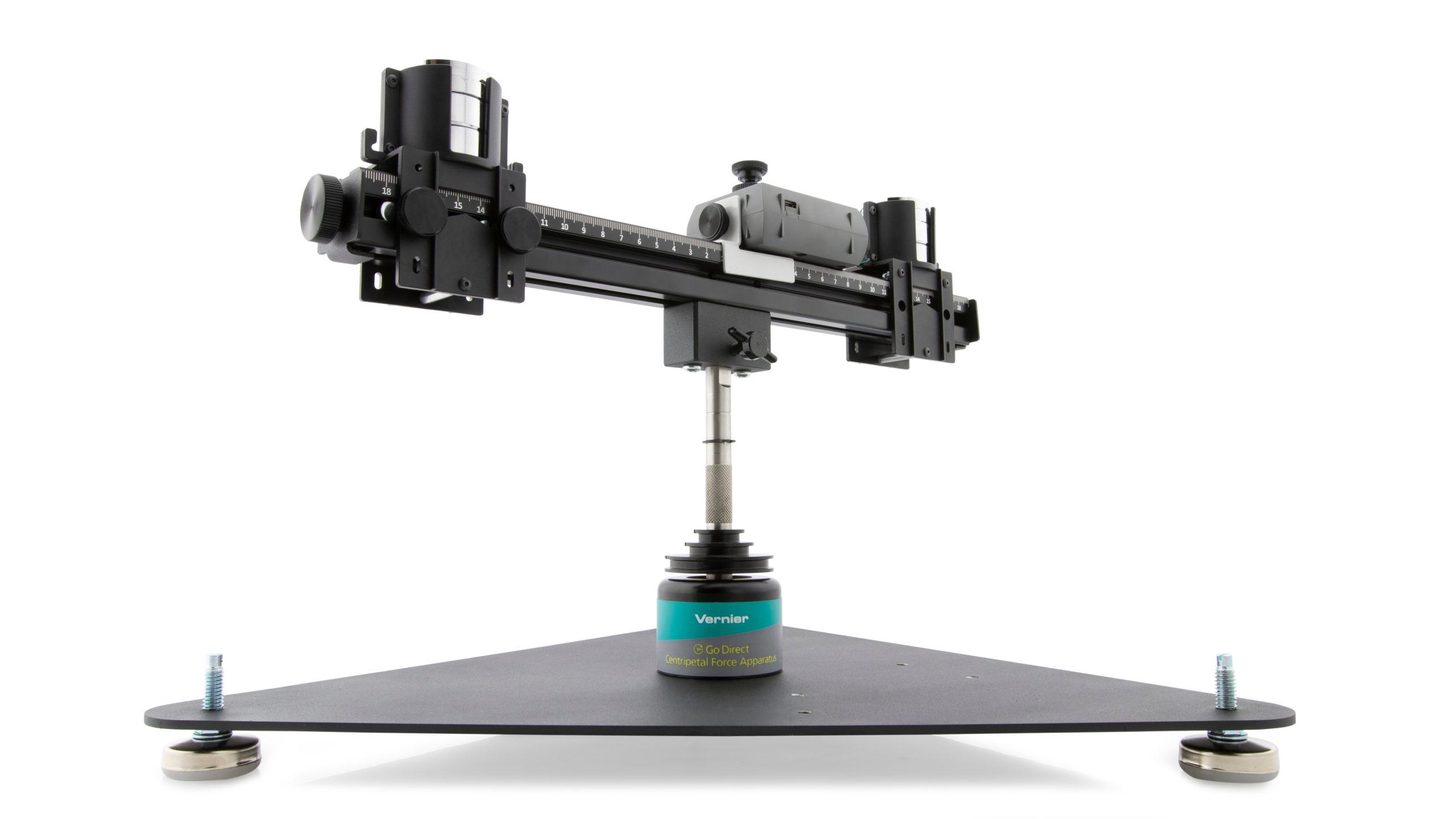
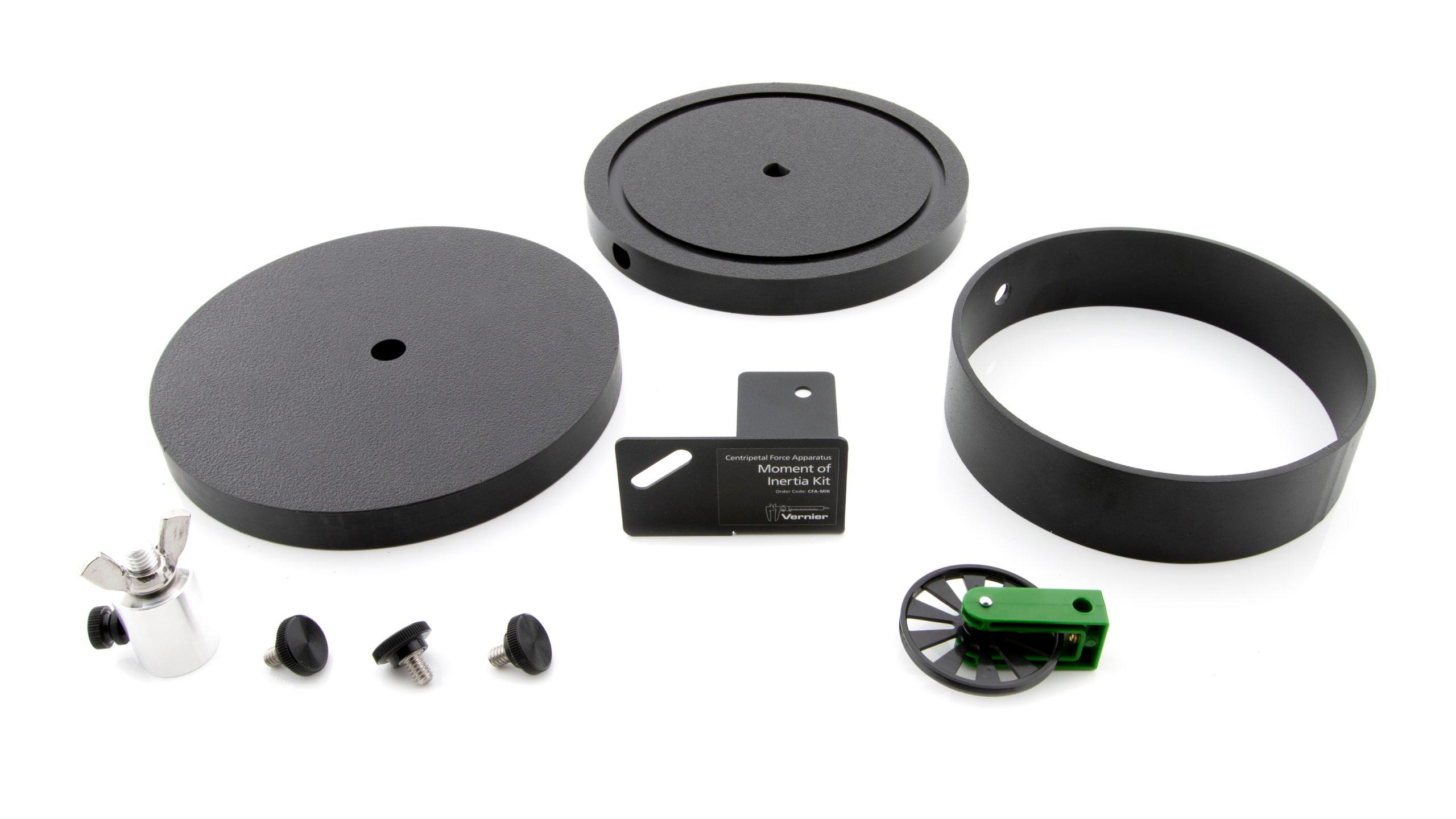
Correlations
Teaching to an educational standard? This experiment supports the standards below.
- International Baccalaureate (IB)/Physics
- 6.1 Circular motion
- B.1 Rigid bodies and rotational dynamics
Ready to Experiment?
Ask an Expert
Get answers to your questions about how to teach this experiment with our support team.
- Call toll-free: 888-837-6437
- Chat with Us
- Email support@vernier.com
Purchase the Lab Book
This experiment is #13 of Advanced Physics with Vernier — Mechanics. The experiment in the book includes student instructions as well as instructor information for set up, helpful hints, and sample graphs and data.

